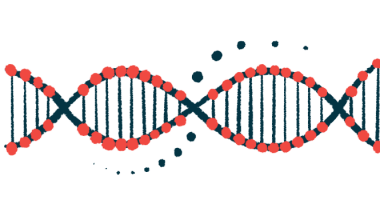HIF-1 may be effective biomarker for small blood vessels in SSc: Study
Levels found higher in patients and linked to active small blood vessel disease

Bloodstream levels of a protein that plays a role in the body’s response to low oxygen may be an effective biomarker to assess abnormal changes in small blood vessels associated with systemic sclerosis (SSc), according to a recent study.
Levels of the protein, called hypoxia-inducible factor-1 (HIF-1), were significantly higher in SSc patients, regardless of disease subtype, and were linked to active small blood vessel disease and the absence of digital ulcers, data show.
These findings support the utility of HIF-1 in assessing small blood vessel alterations and may help identify individuals in the early stages of the disease at risk of progression, researchers noted.
The study, “Hypoxia-Inducible Factor-1α (HIF-1α) as a Biomarker for Changes in Microcirculation in Individuals with Systemic Sclerosis,” was published in the journal Dermatology and Therapy.
Low oxygen conditions in skin can lead to digital ulcers
SSc, also called scleroderma, is a chronic autoimmune disease in which normal tissue is replaced with fibrous scar-like tissue. Subtypes include limited cutaneous SSc (lcSSc), as indicated by skin symptoms limited to the face, lower arms, hands, and fingers, while diffuse SSc (dSSc) is marked by widespread skin symptoms with internal organ involvement.
Excessive scar tissue also narrows blood vessels and restricts blood flow. Such low oxygen, or hypoxic, conditions in the skin can lead to digital ulcers, which are chronic and painful lesions on both hands and feet.
However, as noted by researchers in Poland, identifying those at risk of developing digital ulcers and who may respond to treatment “remains a challenge.”
HIF-1 is a protein that, in response to hypoxic conditions, activates genes that promote the formation of new blood vessels and the production of oxygen-carrying red blood cells.
This holds promise in aiding the identification of individuals who are still in the early stages of the disease but at risk of disease progression.
Researchers set out to study HIF-1’s utility as a biomarker
Because emerging evidence has implicated HIF-1 in the development of fibrotic diseases like SSc, researchers investigated its utility as a biomarker to assess abnormal changes in small blood vessels.
“There is an unmet need to identify reliable ways to monitor disease activity and predict disease progression to optimize individual patient outcomes and to select patients for clinical trials,” they wrote.
Blood samples were collected from 50 SSc patients (42 women, eight men), of whom 27 (54%) were diagnosed with lcSSc and 23 (46%) with dSSc. A group of 30 age- and sex-matched healthy individuals served as controls.
Blood tests revealed a significantly higher mean HIF-1 level in the bloodstream of SSc patients than in the healthy controls — 3.042 vs. 1.969 nanograms per mL (ng/mL) of blood.
Mean HIF-1 levels among lcSSc and dcSSc were each significantly higher than controls, but no notable differences were observed between the two patient groups.
HIF-1 levels showed no relationships with age, body fat content, disease duration, or the presence of Raynaud’s phenomenon, a decrease in blood flow to the fingers and toes when exposed to cold or stress. Moreover, no links were found between HIF-1 and self-reactive antibodies, the extent of skin involvement, or lung disease or function.
Alterations in the network of small blood vessels can be seen early on in SSc using nailfold capillaroscopy, a noninvasive method to measure small blood vessel density in the nailfold area. Abnormalities were categorized as either early, active, or late SSc patterns.
Patients with an active disease pattern had significantly higher HIF-1 levels (6.625 ng/mL) compared to those with an early pattern (2.739 ng/mL) or a late pattern (2.983 ng/mL).
Significantly elevated HIF-1 levels (4.367 ng/mL) were also found in patients without signs of digital ulcers over the past year than those with active (2.832 ng/mL) or healed (2.668 ng/mL) ulcers.
“This observation, coupled with the finding of elevated [HIF-1] levels in patients with SSc and ‘active’ but not ‘early’ or ‘late’ capillaroscopic patterns … could indicate the role of this biomarker in identification of patients without the history of ulcers but during acute acceleration in the process of ischemia [low blood flow],” the researchers wrote.
“These findings emphasize the potential clinical utility of [HIF-1] in evaluating microcirculatory changes and vascular abnormalities in patients with SSc,” they concluded. “This holds promise in aiding the identification of individuals who are still in the early stages of the disease but at risk of disease progression.”








